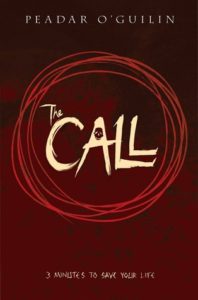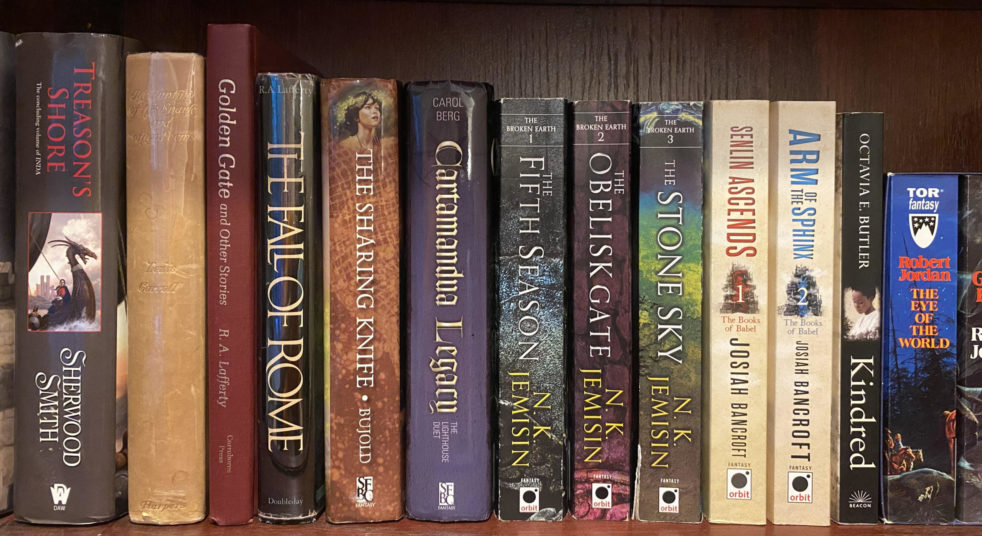
I read Peadar Ó Guilín’s The Call before I got into blogging, but I circled back to the sequel when I found myself struggling to fill the Gothic Fantasy square on my all-sequel themed Bingo card. As it happens, a lot of Gothic fiction seems to be standalone. But while I’m not sure the Grey Land Duology has quite the single-perspective intimacy I expect from Gothic work, it does feature a group of people trapped on an island with an ever-present threat of something monstrous. Add in the gloomy, grey setting, high emotion, and even a pinch of people transforming into monsters? Well, I thought The Invasion might be the best match I was going to get. So, how did the read go, and do I recommend the duology? Let’s take a look!
The Grey Land Duology takes place in an Ireland that has been cut off from the rest of the world by revenge-minded Fae—the Irish stole their land and exiled them to the Grey Land, and they want it back, with the torture and murder of the Irish thieves an entertaining side benefit. While they are unable to return to Irish soil, they have found a way to Call Irish teenagers to their own realm to be hunted for 24 hours. Most return dead, some mutilated, and precious few unharmed. Those few survivors have started survival colleges—boarding schools that take on preadolescents and train them in everything they need to increase the meager odds that they will survive the Call.
The Call follows Nessa, robbed of her ability to walk unaided by a childhood case of polio, but determined to beat the odds and survive. It takes place mostly in the school setting, with periodic chapters detailing the Calls of various other students in Nessa’s circles.
And The Call is absolutely excellent. It has all the elements of a school drama, but all overlaid by the terror of knowing that at any moment, any character (well, any character not already Called) could be Called for a heart-pounding 24-hour fight for survival in the Grey Land. The antagonists are terrifying, with the creeping dread of knowing they could Call at any moment buttressed by a dark atmosphere and no shortage of body horror. Meanwhile, the Calls themselves are honestly structured better than most fantasy competitions, with plenty of opportunity for strategy but with long odds and literal life-or-death stakes. And Nessa is likable enough to lend some real power to the school drama that fills the gaps between Calls.
The problem with the duology is that it’s hard to carry that tension through to a second book. Horror sequels are notoriously difficult to pull off, and when the monsters have been faced once, the only way to maintain the terror seems to be multiplying the threats. And this is precisely what The Invasion attempts. It was done to some success in Aliens and Stranger Things 2, but even in those cases, the second installment lost a lot of foreboding atmosphere in favor of big action sequences. Given that I don’t care much for big action sequences, the sequel already had an uphill climb, but while it’s easy reading and runs along at a breakneck pace, it didn’t do enough to stand with the few successful horror sequels. It spent too much time on a frustrating side character, and a few critical scenes with the main protagonists didn’t quite hit. Combine that with decreased time between action sequences impeding the ability for the tension to build, and there was no way it could stand up to the thrilling first installment. In fairness, several important aspects of the sequel were well-foreshadowed, and it successfully tied up some of the loose ends from the first book, so I can’t call it a total failure. But I’d rather sit with loose ends after a heart-pounding horror fantasy than follow it up with a mediocre action piece that brings the finality.
Recommended (for the first book) if you like: atmospheric fantasy/horror, survival games mixed with school drama.
Can I use it for Bingo? I don’t think it’s too much of a stretch to use for Gothic Fantasy (hard mode). It’s certainly also hard mode for Found Family.
Overall rating: 18/20 (five stars) for the first book, 11/20 (three stars) for the second. I don’t know what number is best for the duology as a whole, but my strong recommendation is to read the first and stop there.
